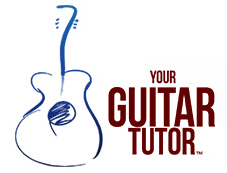Hey there Your Guitar students, I have a real treat for you this week with a guest guitar tutor- Lucy Osborn doing Part 1 of a series on Modern Acoustic Fingerstyle guitar. She is focusing on the Youtube phenomenon Andy McKee and his unique approach to modern guitar playing. Lucy is a fantastic fingerstyle player who knows this style and writes and performs using many of the techniques covered in this series. Please watch the video to hear Lucy’s cover of Drifting by Andy McKee and to see examples of the content covered throughout the lesson. Enjoy.
Welcome to my first blog on Modern Acoustic Fingerstyle. The example song we will be looking at is ‘Drifting’ by Andy McKee. Before attempting this song, make sure that your guitar is tuned to DADGAD.
As you can see from the video, the left and right hand are working together to create the whole sound, but are playing separate parts and use different techniques. Therefore, this first blog will concern the left hand technique, and the following blog will concern the right hand technique.
The primary function of the left hand in this piece is to outline the chords and to execute some of the percussion. Lets look at the chords first. The left hand is using an overhand technique to play a chord on the 6th, 5th and 4th strings. To do this, put your thumb into the back of the guitar neck, with your hand angled so that your first finger is coming over the top of the guitar, not underneath. Then, bring the first finger down quickly onto the strings. This creates a hammer on, which causes the strings to vibrate. It is really important with this technique that you are careful that the large knuckle on your first finger remains slightly angled and does not ‘lock’, as this can cause pain and potentially damage the finger.
The first few times you practice this technique, you may find that the strings do not ring out clearly. Persevere, it can take a while to build up the finger strength required for this technique.
The second function of the left hand is to provide percussion. To do this, bring your left hand up to the guitar body, and hit the curved part above the guitar neck. Experiment with different permutations of hitting with fingers or palms – this will give you different sounds, and different guitars have different woods, which will have different sounds.
Finally, put both techniques together. This is important, because it helps you judge the distance between the chord and the body. Practice very slowly at first, then gradually build up speed. Use this rhythm to play the pattern:
1 2 3 4
(Chord) (Hit) (Chord) (Hit)
When you can play this comfortably, move on to the next lesson on right hand technique.
|
Lucy Osborn
Professional Guitarist and Guitar Tutor 07716587032 |
